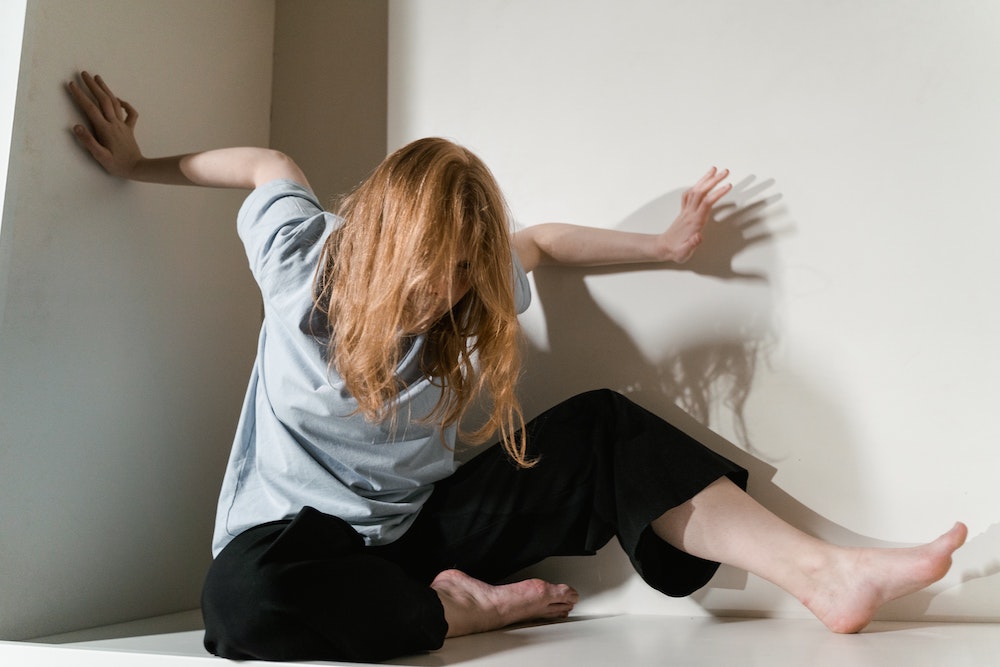Megalophobia – What Is This Fear And How Does It Happen?
What is megalophobia and how does it effect people? It's becoming a bit more common for people these days.
This article is more than 2 years old

This world is filled with phobias. Just ask Indiana Jones and his aversion to snakes. Some of you may have that same aversion and some of you may have one to those eight-legged web spinners. These phobias are among the more well-known ones. But there are more, many more. One of them, megalophobia is one you might not have heard of but affects many throughout the world. What causes this phobia and what does it mean to suffer from it?
WHAT ARE PHOBIAS?

Before we get into megalophobia, let’s explain just what a phobia is. The first thing you need to know about a phobia is that it is not the same thing as a fear. Some of you may see a spider crawling across the floor and panic, jumping for higher ground. Some of you may go wobbly in the knees if you find yourself standing on a high ledge. But a rise in anxiety is pretty normal when faced with these things.
A phobia, on the other hand, is when that “fear” becomes overwhelming to the point of paralyzing. This specific phobia can be so consuming that a person does everything to avoid this situation or object. For instance, if spiders are your true phobia, you will be spending vast amounts of time thinking and worrying about those crazy eight legs. It will get so bad that you will begin to avoid places or situations where you might cross paths with spiders. You will avoid walking past bushes and you may even avoid walking outside at night. A phobia is all-consuming.
MEGALOPHOBIA

Megalophobia is one of over 400 known phobias. If you actually have megalophobia, then you have a certain type of anxiety disorder where you have an intense fear of large objects. This person will experience intense fear and anxiety when they are around large objects and can even feel this just by thinking about them. Those with megalophobia will do everything in their power to avoid large objects.
So, what kind of large objects are we talking about here? Well, these objects can be man-made, animals, or even vast spaces. Here are a few examples:
- Large statues or monuments
- Big boats, ships, barges
- Tall buildings, such as skyscrapers
- Trains, busses, garbage trucks, or any other large vehicles
- Large animals such as whales and elephants
- Large or natural objects like mountains, volcanoes, oceans, and lakes
- Large or vast spaces like the inside of a sports stadium
- Airplanes and helicopters
WHAT IS MEGALOPHOBIA CAUSED BY?
If you are affected by megalophobia, your phobia will include more than just one large object. Sometimes, this anxiety disorder can be hard to diagnose. There are other phobias out there that include large objects, but these are centered around one specific object. For instance, if you have a massive fear of the ocean, you may be experiencing thalassophobia (fear of the ocean). This is not megalophobia if your fear is focused on one specific thing.
For someone to be affected by megalophobia, there is a great chance that it was caused by a very bad experience one had with large objects. You can also experience this from learned behaviors from family members you grew up with. A family member could have put the fear of God in you concerning large objects and as you got older, it manifested into something more. Some phobias can be hereditary.
WHAT DOES MEGALOPHOBIA FEEL LIKE?

If you happen to have a phobia, in this case, megalophobia, there are some symptoms you may also experience besides the intense fear. These could include:
- Shaking
- Increased heart rate
- Dizziness
- Sweating
- Mild chest pain
- Sick stomach
- Vomiting
- Diarrhea
- Crying
- Panic
- Shortness of breath
You could experience some or all of these symptoms (which would be an extreme case). If you happen to have an intense fear or some of the above symptoms, it is very important to contact your healthcare provider. They can give you the proper diagnosis and then treatment.
IS MEGALOPHOBIA RARE?
It is hard to put an exact figure on those experiencing megalophobia. Many people don’t care to seek treatment for their phobias; instead, they avoid situations that trigger their fears. It is estimated, though, that between 7 to 10% of our population has a phobia.
While megalophobia may be a rare phobia, there are a number of them we are sure you’ve heard of. These include:
- Claustrophobia – fear of enclosed spaces
- Acrophobia – fear of heights
- Cynophobia – fear of dogs
- Astraphobia – fear of storms
- Trypanophobia – fear of needles
- Entomophobia – fear of insects
- Agoraphobia – fear of open spaces
What may be even more rare than megalophobia could be caligynephobia (or venustraphobia) which is the fear of beautiful women. Turophobia is the fear of cheese. Do you have a massive fear of long words? Well then you are experiencing hippopotomonstrosesquipedaliophobia. How about ducks (quack)? If you have a sneaky feeling that wherever you are, wherever you go, a duck is watching you, then you are experiencing anatidaephobia. There is even a fear of developing a phobia that is called phobophobia.
HOW DO YOU KNOW?
Knowing and understanding the diagnosis of megalophobia can be sort of tricky. As discussed earlier, a person can have a fear of a large object and not be considered megalophobic. To fully diagnose it, your healthcare provider will present you with a series of questions revolving around your history, experiences, and symptoms you are feeling. Typically, to be diagnosed with megalophobia, you have to have been experiencing this crippling fear and anxiety centered around large objects for greater than six months.
HOW DO YOU TREAT IT?

Once you have been diagnosed with megalophobia, the next step would be to treat it. This is done through psychotherapy such as exposure therapy or cognitive behavioral therapy. Sometimes both. Exposure therapy is a common choice for those trying to get past their phobia. With exposure therapy, your therapist or psychologist will first start by talking to you about your fear of large objects. After that, they will continue to talk about these objects but will also introduce you to them with pictures. Finally, you will be taken to large objects in person. This process is slow and gradual and its pace will be set by your therapist.
With cognitive behavioral therapy, this treatment is centered around talking about your fears. Through talking and questioning, your therapist will be able to give you a better perspective on your phobia and teaches you how to better respond to and cope with your fears. There typically aren’t any medications prescribed to treat megalophobia but certain things such as beta blockers and sedatives could be prescribed. While there is no specific cure for megalophobia, exposure therapy has been the first choice in helping those who have these fears.




